
Bielefeld is a city in the Ostwestfalen-Lippe Region in the north-east of North Rhine-Westphalia, Germany. With a population of 341,755, it is also the most populous city in the administrative region (Regierungsbezirk) of Detmold and the 18th largest city in Germany.

Paderborn is a city in eastern North Rhine-Westphalia, Germany, capital of the Paderborn district. The name of the city derives from the river Pader and Born, an old German term for the source of a river. The river Pader originates in more than 200 springs near Paderborn Cathedral, where St. Liborius is buried.
An officer candidate school (OCS) is a military school which trains civilians and enlisted personnel in order for them to gain a commission as officers in the armed forces of a country. How OCS is run differs between countries and services. Typically, officer candidates have already attained post-secondary education, and sometimes a bachelor's degree, and undergo a short duration of training which focuses primarily on military skills and leadership. This is in contrast with a military academy which includes academic instruction leading to a bachelor's degree.

The Senne is a natural region in the Regierungsbezirk of Detmold, in the state of Nordrhein-Westfalen in west-central Germany. It lies to the west of the Teutoburger Forest, and has an area of approximately 210 km2. It lies between the cities of Bielefeld to the north-west, Detmold to the north-east, and Paderborn to the south.

Horn-Bad Meinberg is a German city in the Lippe district in the north-east of North Rhine-Westphalia on the edge of the Teutoburg forest. The district Bad Meinberg is a spa resort. It has 17,263 inhabitants (2019). It was formed in 1970 by merging various other municipalities that had grown together, including Bad Meinberg and Horn - the new entity's original name was Bad Meinberg-Horn, before taking its present name.
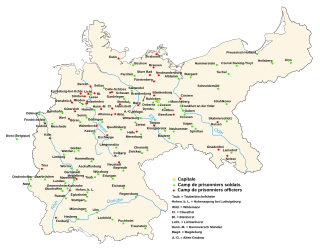
During World War I, German prisoner-of-war camps were run by the 25 Army Corps Districts into which Germany was divided. Around 2.4 million men were World War I prisoners of war in Germany.

Munster, also called Munster (Örtze) or formerly Munsterlager, is a small town in the district of Heidekreis, in Lower Saxony, Germany almost equidistant from Hamburg and Hanover. The town is home to the German Army's largest garrison and is situated between the two training areas of Munster North and Munster South. It is also the fourth largest garrison in the German Armed Forces. The German Chemical Defence Research Establishment and the Society for the disposal of chemical warfare agents and old armaments GmbH (Ltd.) (GEKA) are located in Munster.

Hövelhof is a municipality in the district Paderborn, in North Rhine-Westphalia, Germany. Since 14 March 2012, Hövelhof can use the official additive Sennegemeinde.

Welda is a village and constituent community (stadtteil) of the town of Warburg, in the district of Höxter in the east of the federal state of North Rhine-Westphalia, Germany. Welda has historically been known by the names of Wellede, Welde and Kerkwellede.
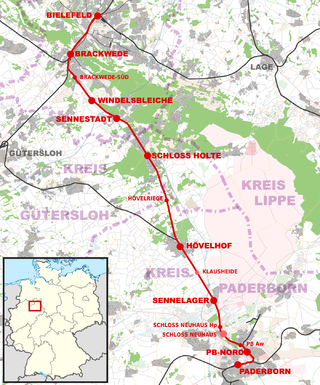
The Senne Railway is a single-track branch line from Brackwede to Paderborn with a through service to Bielefeld in the German state of North Rhine-Westphalia. It received its name from the Senne, a landscape that it crosses in a north-south direction. The Senne-Bahn Regionalbahn service is part of Deutsche Bahn’s Münster-Ostwestfalen (MOW) network of regional services, which has its headquarters in Münster.
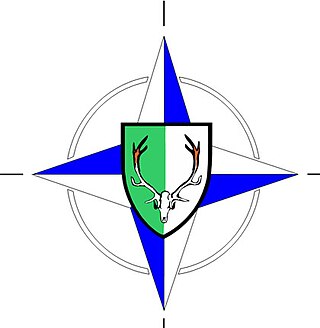
Bergen-Hohne Training Area is a NATO military training area in the southern part of the Lüneburg Heath, in the state of Lower Saxony in northern Germany. It covers an area of 284 square kilometres, which makes it the largest military training area in Germany.
Munster Training Area is a military training area in Germany on the Lüneburg Heath. It comprises two separate areas with different purposes: Munster North (Munster-Nord) and Munster South (Munster-Süd). The two areas are separated geographically by the town of Munster and several barracks. When the military training area was established a camp or Lager was built about 1.5 kilometres (0.93 mi) from the town centre which became known as Munsterlager. Between Munster North and South there is a road corridor to the nearby training area of Bergen-Hohne over which exercising troops can transfer from one area to the other. There are many rare and endangered plant species on this terrain today that thrive in the environment created by the training area.
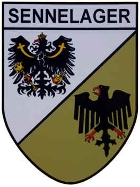
The Sennelager Training Area is a military training area in Germany, under the control of British Forces based in Paderborn Garrison. It covers an area of 116 square kilometres, and belongs to the German Government, which discharges its responsibility through its Institute for Federal Real Estate. The area was first used for military purposes at the end of the 19th century. The Field Marshal Rommel Barracks, Augustdorf is located nearby.
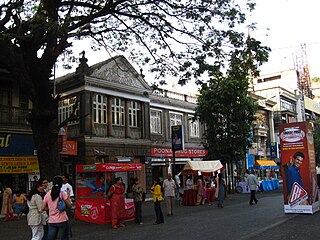
Pune Cantt, also known as Camp, is a military cantonment located in the city of Pune, India. It was established in 1817 for accommodating troops of the Indian Army. The cantonment houses many military establishments. It is also known for its shopping locations, MG Road and East Street. The headquarters of Indian Army's Southern Command is located in Pune Cantonment. The National War Memorial Southern Command which commemorates the sacrifice of soldiers of the Indian Armed Forces is also situated in the cantonment.
Westfalen Garrison is a major British garrison with facilities located in Paderborn, Sennelager and Gütersloh in North Rhine-Westphalia, Germany which now forms the major part of British Forces Germany. It was the home of 20th Armoured Brigade and most of its subordinate units. Headquarters Westfalen Garrison is based at Antwerp Barracks in Sennelager.

SS-Truppenübungsplatz Heidelager was a World War II SS military complex and Nazi concentration camp in Pustków and Pustków Osiedle, Occupied Poland. The Nazi facility was built to train collaborationist military units, including the Ukrainian 14th Waffen SS Division "Galician", and units from Estonia. This training included killing operations inside the concentration camps – most notably at the nearby Pustków and Szebnie camps – and Jewish ghettos in the vicinity of the 'Heidelager'. The military area was situated in the triangle of the Wisła and San rivers, dominated by large forest areas. The centre of the Heidelager was at Blizna, the location of the secret Nazi V-2 missile launch site, which was built and staffed by prisoners from the concentration camp at Pustków.

The Field Marshal Rommel Barracks, Augustdorf is a German Army military base located in Augustdorf in the state of North Rhine-Westphalia, Germany, and the largest base of the German Army. The brigade staff and most of the units of the 21st Panzer Brigade are located there. Around 4,300 soldiers serve there.

Barker Barracks was a military installation in Paderborn, Germany.
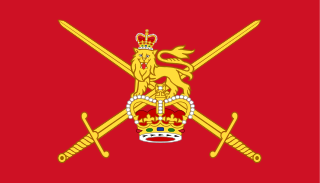
British Army Germany, is the superior institution under which the remaining installations of the British Forces Germany are organised after the completion of the withdrawal of the British Forces from Germany in February 2020. Apart from the Alpine Training Centre Hubertus Haus in Oberstdorf, which is in Bavaria, British Army Germany is entirely based in North Rhine-Westphalia.



















